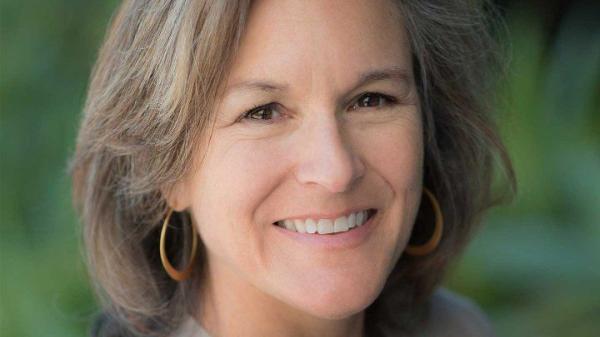5 Hours of Moderate Activity a Week May Be Required to Avoid Midlife Hypertension, UCSF-Led Study Shows

Young adults must step up their exercise routines to reduce their chances of developing high blood pressure or hypertension – a condition that may lead to heart attack and stroke, as well as dementia in later life.
Current guidelines indicate that adults should have a minimum of two-and-a-half hours of moderate intensity exercise each week, but a new study led by UCSF Benioff Children’s Hospitals reveals that boosting exercise to as much as five hours a week may protect against hypertension in midlife – particularly if it is sustained in one’s 30s, 40s and 50s.
In the study in American Journal of Preventive Medicine, researchers followed approximately 5,000 adults ages 18 to 30 for 30 years. The participants were asked about their exercise habits, medical history, smoking status and alcohol use. Blood pressure and weight were monitored, together with cholesterol and triglycerides.
Hypertension was noted if blood pressure was 130 over 80 mmHg, the threshold established in 2017 by the American College of Cardiology/American Heart Association.
The 5,115 participants had been enrolled by the Coronary Artery Risk Development in Young Adults (CARDIA) study and came from urban sites in Birmingham, Ala., Chicago, Minneapolis and Oakland, Calif. Approximately half the participants were Black (51.6 percent) and the remainder were white. Just under half (45.5 percent) were men.
Fitness Levels Fall Fast for Black Men
Among the four groups, who were categorized by race and gender, Black men were found to be the most active in early adulthood, exercising slightly more than white men and significantly more than Black women and white women. But by the time Black men reached age 60, exercise intake had slumped from a peak of approximately 560 exercise units to around 300 units, the equivalent to the minimum of two-and-a-half hours a week of moderate intensity exercise recommended by the U.S. Department of Health and Human Services. This was substantially less exercise than white men (approximately 430 units) and slightly more than white women (approximately 320 units). Of the four groups, Black women had the least exercise throughout the study period and saw declines over time to less than approximately 200 units.
“Although Black male youth may have high engagement in sports, socioeconomic factors, neighborhood environments, and work or family responsibilities may prevent continued engagement in physical activity through adulthood,” said first author Jason Nagata, MD, of the UCSF Division of Adolescent and Young Adult Medicine. Additionally, Black men reported the highest rates of smoking, which may preclude physical activity over time, he noted.
Physical activity for white men declined in their 20s and 30s and stabilized at around age 40. For white women, physical activity hovered around 380 exercise units, dipping in their 30s and remaining constant to age 60.
Rates of hypertension mirrored this declining physical activity. Approximately 80 percent to 90 percent of Black men and women had hypertension by age 60, compared with just below 70 percent for white men and 50 percent for white women.
“Results from randomized controlled trials and observational studies have shown that exercise lowers blood pressure, suggesting that it may be important to focus on exercise as a way to lower blood pressure in all adults as they approach middle age,” said senior author Kirsten Bibbins-Domingo, MD, PhD, of the UCSF Department of Epidemiology and Biostatistics and the Lee Goldman Endowed Chair in Medicine.
“Teenagers and those in their early 20s may be physically active but these patterns change with age. Our study suggests that maintaining physical activity during young adulthood – at higher levels than previously recommended – may be particularly important.”
More Exercise Offers Best Protection Against Hypertension
When researchers looked at the 17.9 percent of participants who had moderate exercise for at least five hours a week during early adulthood – double the recommended minimum – they found that the likelihood of developing hypertension was 18 percent lower than for those who exercised less than five hours a week. The likelihood was even lower for the 11.7 percent of participants who maintained their exercise habits until age 60.
Patients should be asked about physical activity in the same way as they are routinely checked for blood pressure, glucose and lipid profiles, obesity and smoking, Nagata said, and intervention programs should be held at schools, colleges, churches, workplaces and community organizations. Black women have high rates of obesity and smoking, and low rates of physical activity, he said, and should be an important group for targeted intervention.
“Nearly half of our participants in young adulthood had suboptimal levels of physical activity, which was significantly associated with the onset of hypertension, indicating that we need to raise the minimum standard for physical activity,” Nagata said. “This might be especially the case after high school when opportunities for physical activity diminish as young adults transition to college, the workforce and parenthood, and leisure time is eroded.”
Co-Authors: Eric Vittinghoff, PhD, and Andrea Garber, PhD, RD, of UCSF; Kelley Pettey Gabriel, PhD, of University of Alabama at Birmingham; Andrew E. Moran, MD, of Columbia University, New York; Stephen Sidney, MD and Jamal Rana, MD, PhD, of Kaiser Permanente Northern California and Jared Reis PhD, of National Heart, Blood, and Lung Institute in Bethesda, Md.
Funding: The Coronary Artery Risk Development in Young Adults (CARDIA) study is conducted and supported by the National Heart, Lung, and Blood Institute in collaboration with the University of Alabama at Birmingham, Northwestern University, University of Minnesota and Kaiser Foundation Research Institute.
UCSF Benioff Children’s Hospitals are two leading Bay Area children’s hospitals with longstanding commitments to public service. UCSF Benioff Children’s Hospital San Francisco and UCSF Benioff Children’s Hospital Oakland both have leading pediatric residency programs, unique pediatric subspecialty fellowship programs, a research base for the next generation of discoveries, and expertise in pediatric clinical care, public policy and patient advocacy.




